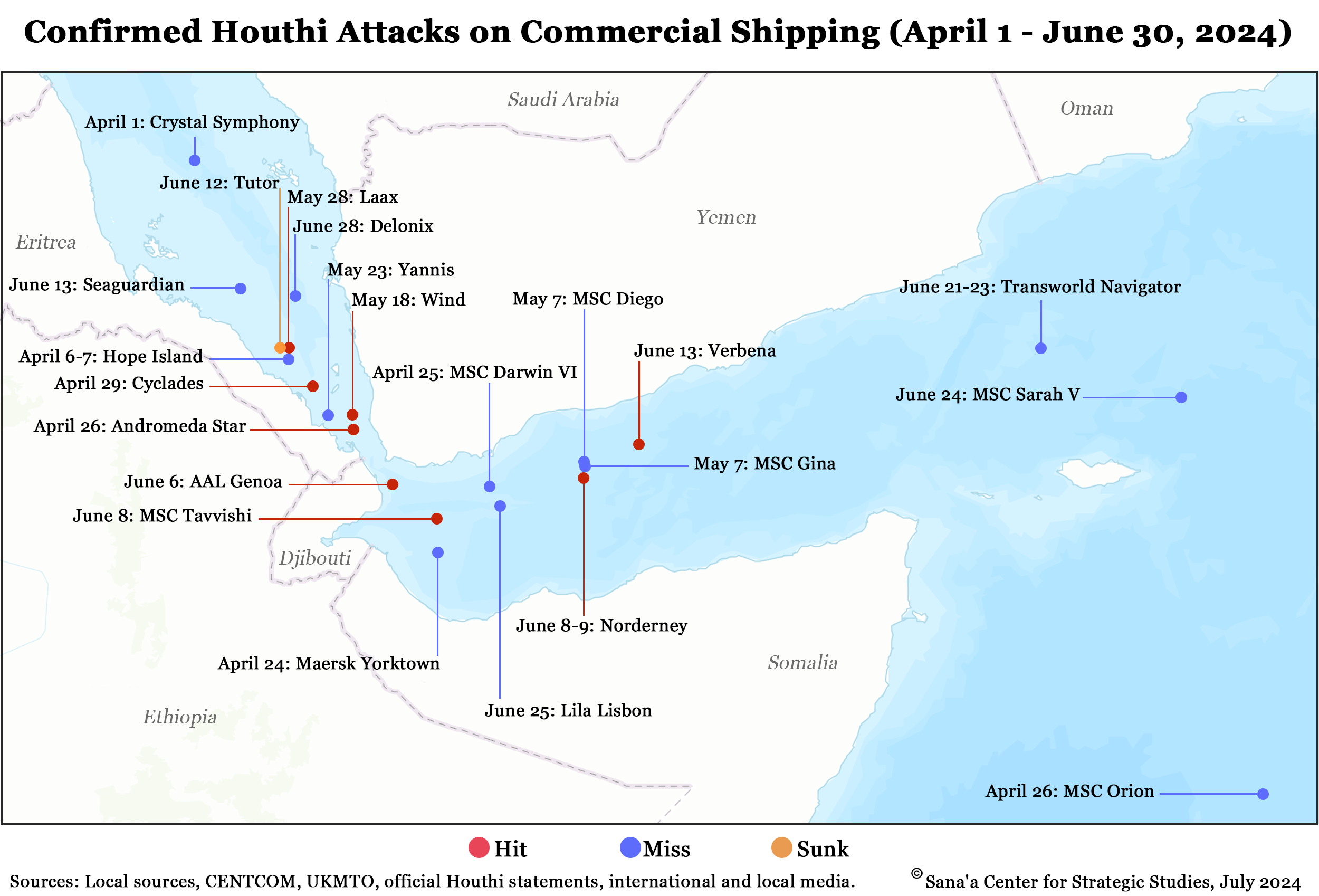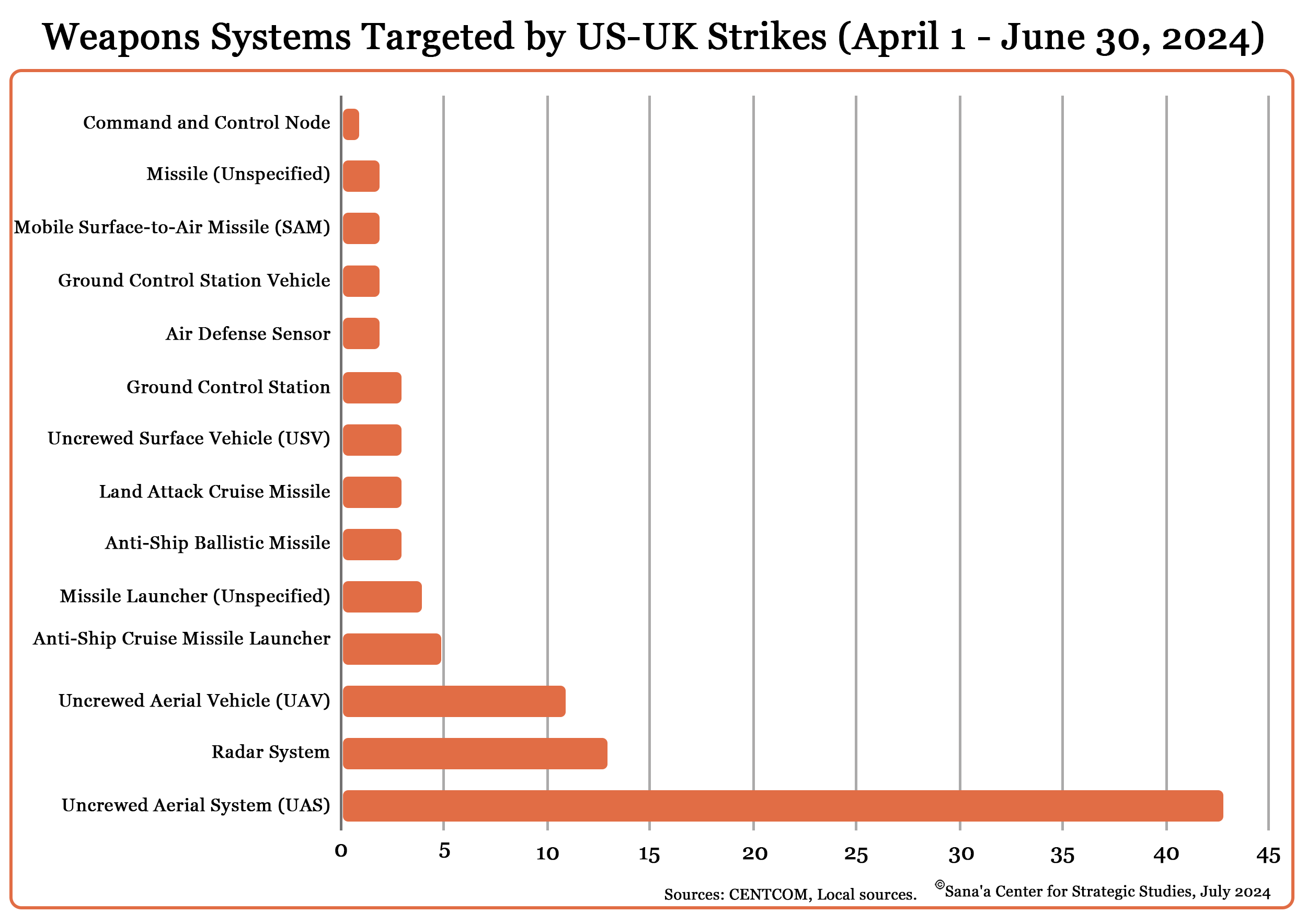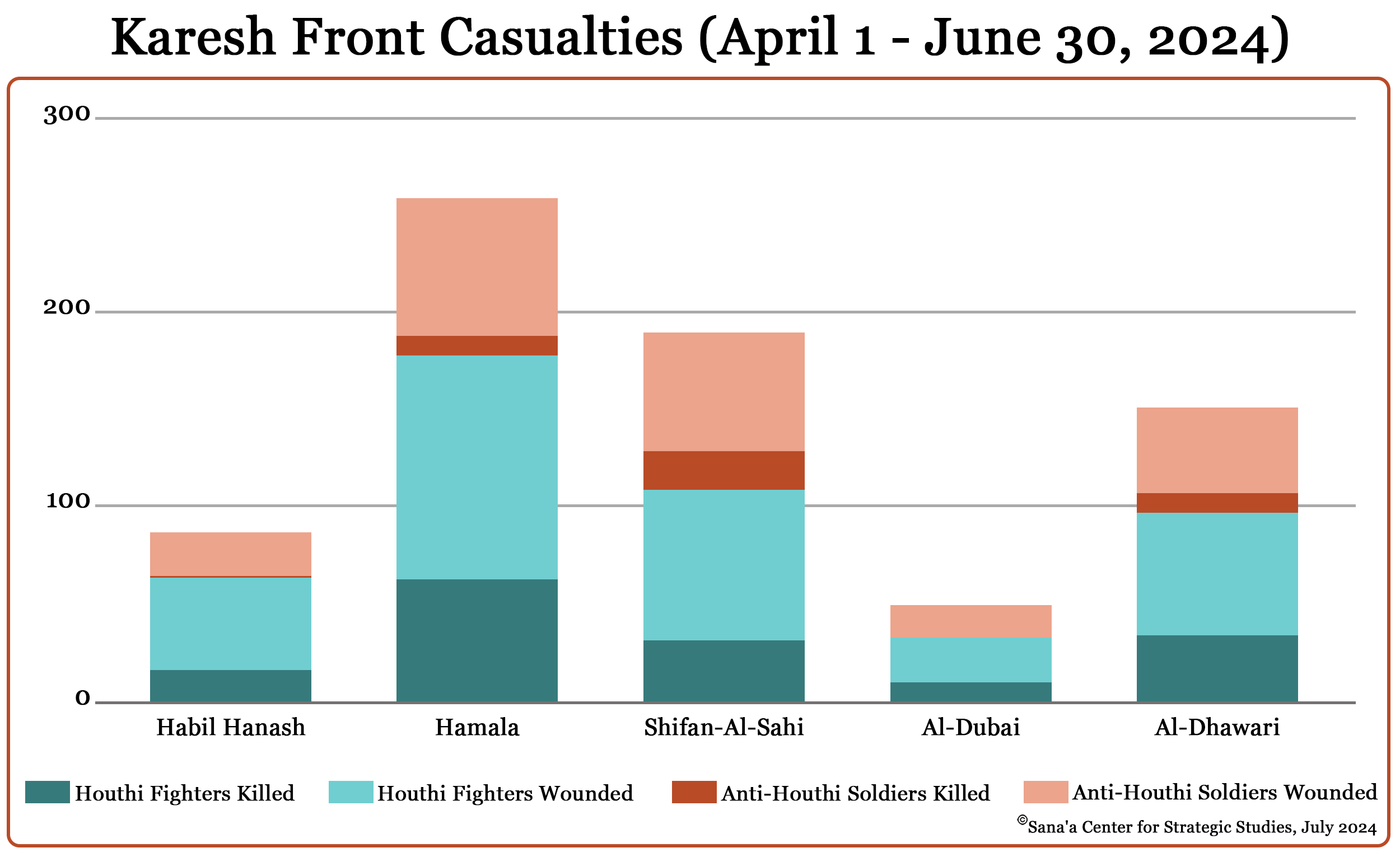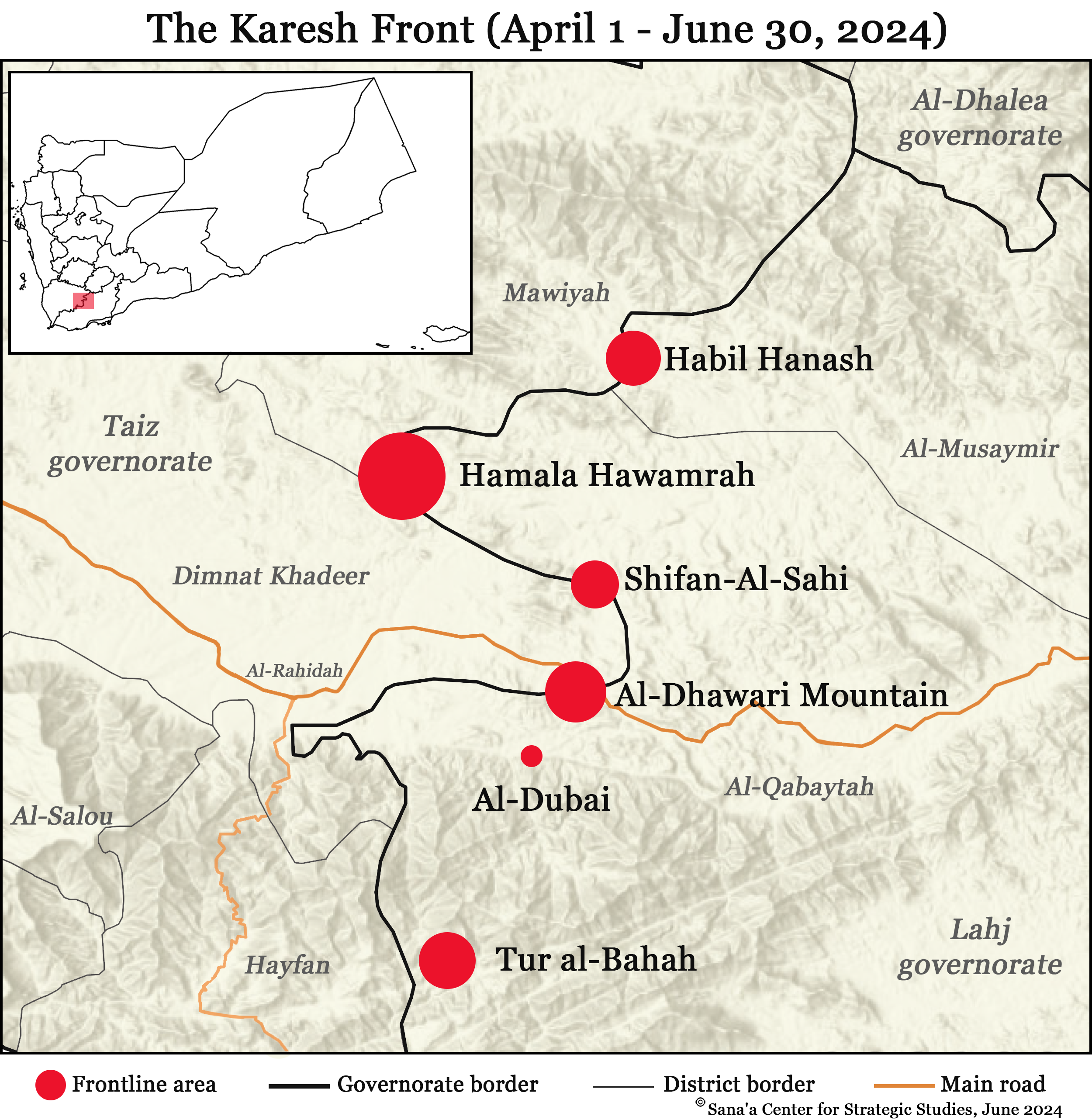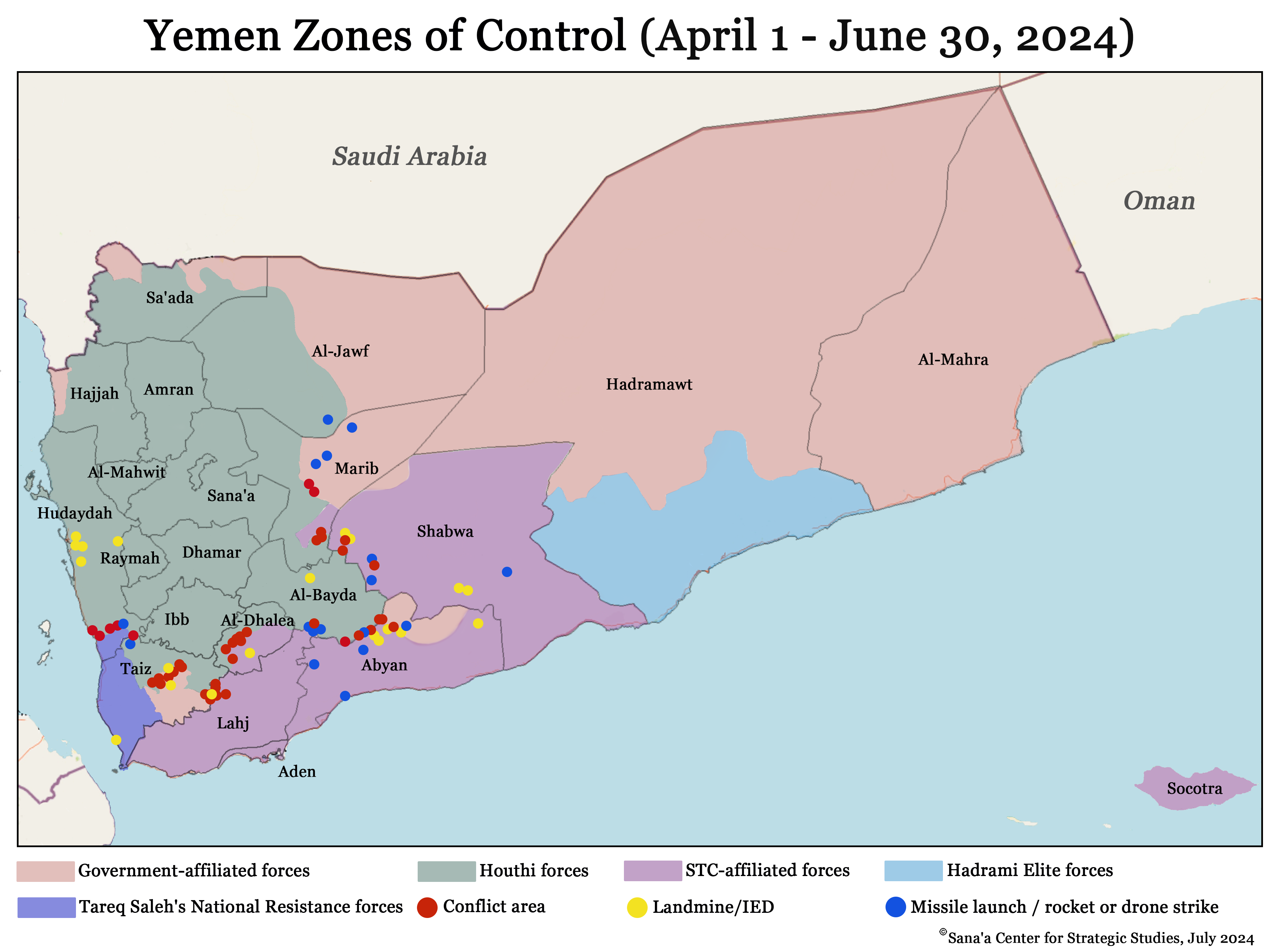Houthi Attacks Pick Up Pace as US Grows Weary
In assessing the situation in the Red Sea and Gulf of Aden in early April, one might have said Operations Prosperity Guardian and Aspides, the US- and EU-led coalitions tasked with defending the seas from Houthi attacks on commercial vessels, were achieving their declared goals. Attacks on ships were down, and Pentagon officials even speculated that the Houthis could be running out of munitions.
But appraising events at the end of June, the facts on the ground now paint a very different picture. Houthi maritime attacks are at an all-time high, and the group is boasting a surprisingly advanced arsenal that has made their attacks more accurate and lethal. At the same time, US officials overseeing the numerous warships protecting waterways around Yemen – while publicly enthusiastic – told the Wall Street Journal they worry the conflict is “simply not sustainable” after more than seven months at sea and US$1 billion spent in munitions. So what changed in the last three months, and how did the Houthis turn the tide? The keys to this conundrum are a long-flawed US strategy that has failed to both recognize the importance of an asymmetric battleground and tackle known weapons smuggling routes from African coasts to Yemeni ports under Houthi control.
Early Months: A Possible Reprieve?
At the outset of April, the seas surrounding Yemen were among the calmest they had been since Houthi forces targeted their first commercial vessel on November 19, 2023. While far from being resolved, a 12-day hiatus of confirmed attacks between April 7-19 seemed to signal there could be a period of de-escalation on the horizon. The April 4 departure of the suspected Iranian spy vessel Behshad from the Gulf of Aden after nearly three years also gave the impression that the strategic waterways could be witnessing an extended calm. Houthi leader Abdelmalek al-Houthi himself even gave observers hope that tensions could be easing: on April 18, he announced that European ships sailing to destinations other than Israel could pass through the Red Sea and the Gulf of Aden “safely and soundly.”
In the following weeks, the group made several unverified claims about targeting ships, but an attack was not confirmed by an independent source until April 24, when a missile hit the water near the Maersk Yorktown. In the following week, the Houthis claimed attacks on two American destroyers and four commercial vessels, hitting two of the latter.
“Fourth Phase” Spoils Calm
Exactly two weeks after Abdelmalek al-Houthi’s address ensuring safe passage, he again touched on Red Sea operations in a May 2 speech, this time with a very different tune. Starting immediately, he announced, the group would begin a new “fourth phase” of their attacks, in which they would target not only ships sailing to Israel but any ship owned by a company that was utilizing Israeli ports. Attacks would also now be expanded to the Mediterranean Sea and the Indian Ocean. The following week, the tone was even harsher, with vague intimations of fifth and sixth stages and promises that the group had “no red lines.” On May 23, the group announced its first operation targeting a ship in the Mediterranean Sea. While the alleged attack on the Essex was never confirmed and likely erroneous, given reports that the ship had not yet left the Egyptian coast, it appeared to validate the group’s intent to follow through on its promises of an extended battlefield.
In the months that have followed, the Houthis have claimed attacks on 11 ships in the Mediterranean or the Israeli port of Haifa – seven of which were unnamed vessels. None of the claimed attacks have been publicly confirmed by a third party. While it is difficult to discern whether the group is bluffing or ships are simply not reporting attacks (which they often do for safety or business concerns), the Houthis have been known to engage in disinformation in the past. In recent weeks, the group has increasingly turned to collaboration with the Islamic Resistance in Iraq, a network of Iranian-backed militant groups, to launch “joint military operations” against commercial ships in the Mediterranean and Israeli targets, mainly the port of Haifa. Again, these claimed attacks have been either unconfirmed or denied by the Israeli military.
Iranian Weapons Arrive via Africa
The key to the resurgence in Houthi maritime attacks lies not in US and European forces’ failure to counter the strikes but rather in their inability to prevent weapons from reaching the group. The resulting asymmetric warfare, in which dozens of cheap automated drones, missiles, and boats can be used simultaneously against a single target, has not only cost the US government hundreds of millions of dollars but also valuable time and manpower as tensions remain high in other waterways.
In early April, a security source divulged to the Sana’a Center that Iran had begun smuggling arms to Eritrea, and from there to Hudaydah and Red Sea islands under Houthi control. This information corroborates previous suspicions of locals in coastal areas regarding the source of some arms coming in by boat. In March, Sana’a authorities reached an agreement with the Eritrean navy to allow large Yemeni dhows to fish in Eritrean waters, after which Eritrean authorities began issuing permits, according to local sources. Dozens of boats from Houthi-controlled territories reportedly sailed to the Eritrean port of Massawa to complete paperwork for these permits, while representatives from the Eritrean navy were also present in Hudaydah city.
Another security source revealed to the Sana’a Center in May that a separate, increasingly important smuggling route exists between Port Sudan and the Houthi-run port of Al-Salif, north of Hudaydah, for the movement of weapons and fighters. The route seems to connect to Bandar Abbas in Iran and is overseen by Iran’s Islamic Revolutionary Guard Corps’ Quds Force. It’s likely that the Houthis have used this route to stock up on weaponry, which they could deploy at a later stage of their Gaza-related operations.
This claim, too, has been supported by locals who reported cargo ships reportedly carrying weapons and dhows entering the naval cargo dock north of Hudaydah city on multiple occasions. On May 27, local and military sources informed the Sana’a Center that the Iran-flagged container ship Daisy docked at Port Sudan, where it stayed for two days before sailing toward the southern Red Sea and anchoring parallel to several Houthi boats near Jabal al-Tair Island and the Farasan Archipelago. The vessel remained there until May 30 before shutting off its AIS tracking system. The Daisy, whose parent company is sanctioned by the US, has been accused of smuggling weapons to Hezbollah in Lebanon from Iran’s Bandar Abbas port vis-à-vis a clandestine stop in the Syrian port of Latakia, before later heading to European cities publicly listed as ports of call.
Local officials and international observers have not been blind to the influx of arms in Houthi-held ports. Government Defense Minister Mohsen al-Daeri told the UN that a number of Iranian arms shipments had arrived in Hudaydah without inspection, while British representative to the UN Barbara Woodward reported to the UN Security Council that as many as 500 truckloads of material had bypassed the UN Verification and Inspections Mechanism (UNVIM) in Djibouti and entered Houthi ports since October 2023. Meanwhile, experts surmise that the Houthis still possess significant capabilities for the domestic manufacture of drones and missiles; the group has even released elaborate promotional videos showcasing what they claim are newly introduced ballistic missiles.
Attacks Escalate While US Strike Group Sails Home
The result of this influx of firepower into Houthi hands has been more attacks and an increased likelihood of accurate hits. The most significant of these was against the Tutor, a Liberia-flagged cargo vessel that the Houthis hit on June 12 with an unmanned surface vessel (USV) and later an aerial projectile, likely a drone. The attack killed a Filipino crewman and eventually caused the ship to sink, making it the second to do so after the Rubymar in early March. Another vessel, the Verbena, took heavy damage the day after the Tutor, when it was struck by three missiles. One sailor was seriously injured, and the crew was forced to abandon ship. The vessel was left adrift in the Red Sea and was reportedly afloat for weeks before eventually being salvaged, according to Reuters.
In recent weeks, the Houthis have announced multiple ship targetings at a time, sometimes as many as ten in a single week. However, the vast majority of these remain unconfirmed, indicating that the group is likely announcing unrealized attacks or claiming successful hits for missiles and drones shot down by US and coalition forces. Among the ships most commonly misreported as being targeted and/or hit is the USS Dwight D. Eisenhower, the Nimitz-class aircraft carrier that had been stationed in the Red Sea and Gulf of Aden since the outset of Operation Prosperity Guardian. Houthi forces claimed two separate attacks against the Eisenhower, on June 1 and again on June 22, both of which the US Navy denied. Associated Press journalists also verified that the ship was in good shape, save from the wear and tear to be expected from a combat deployment. Nonetheless, on June 22, the Eisenhower – along with the three other ships in the strike group, the USS Philippine Sea, USS Gravely, and the USS Mason – exited the Red Sea, ending its twice-extended stay in the region. The USS Carney, another destroyer that played an active role in combating Houthi attacks, returned to the United States on May 14 after seven months in the region during which it reportedly shot down 45 Houthi drones and missiles. The Eisenhower carrier strike group was replaced by the USS Theodore Roosevelt, which arrived on July 12 after a military exercise off the coast of Korea. The transition between Ike’s departure and the Roosevelt’s arrival has likely left European navies and shipping merchants alike nervous – the region has now been without a US carrier strike group for more than two weeks. The fact that the British frigate HMS Diamond also recently returned home likely does not excite European sailors who have remained behind to escort commercial vessels. Operation Aspides’ leader has expressed concerns about the group’s ability to continue combatting strikes at its current operating capacity, saying they need double their manpower to remain effective.
As a new fleet of US sailors prepares to arrive in Yemen’s coastal waters, the US Navy is likely reassessing its mission and that of its European partners. Current military operations are not working: after nearly nine months of tit-for-tat seaborne conflict, attacks remain frequent, shipping insurance costly, and Houthi morale high. Western navies would be prudent to take note of the fact that weapons continue to flow into Houthi ports – no matter how many missile battalions coalition forces target on land, they cannot halt attacks as long as new munitions continue to arrive on a regular basis. Looking forward, US and European forces would need to assess not only an immediate plan to reduce the recent spike in Houthi operations but also develop a long-term strategy for dealing with the group as they continue to innovate and re-supply their increasingly more complex arsenal.
Airstrikes Resume at Steady Clip
US airstrikes targeting Houthi weapons stockpiles and strategic sites have fluctuated in recent months, with April experiencing a relative reprieve and strikes picking back up as Houthi maritime attacks became more aggressive in mid-May.
As the situation in the Red Sea and Gulf of Aden calmed in mid-April, so too did US attacks on Houthi territory. The second half of the month saw one of the longest reprieves in strikes against Houthi targets, with a one-week gap between April 17-24. In the subsequent 30 days, strikes only occurred on four days (April 25 and 30, and May 2 and 13). US forces redoubled their attacks toward the end of the month, peaking on May 30, when UK forces joined their American partners in targeting 13 sites across Sana’a, Hudaydah, and Taiz. This round of air raids was unusual in that it provoked a response from Houthi forces – who otherwise tend to report minimal details regarding damages and casualties. The Houthi-run Saba News network announced that 16 people were killed and 42 others were injured as a result of the strikes, including both military personnel and civilians. Local medical sources told the Sana’a Center that several of the deceased and wounded were non-Yemeni nationals, indicating that foreign military experts could have been among the casualties. On June 3, Houthi forces in Hudaydah held a public funeral for 15 officers who were reportedly killed in the airstrikes.
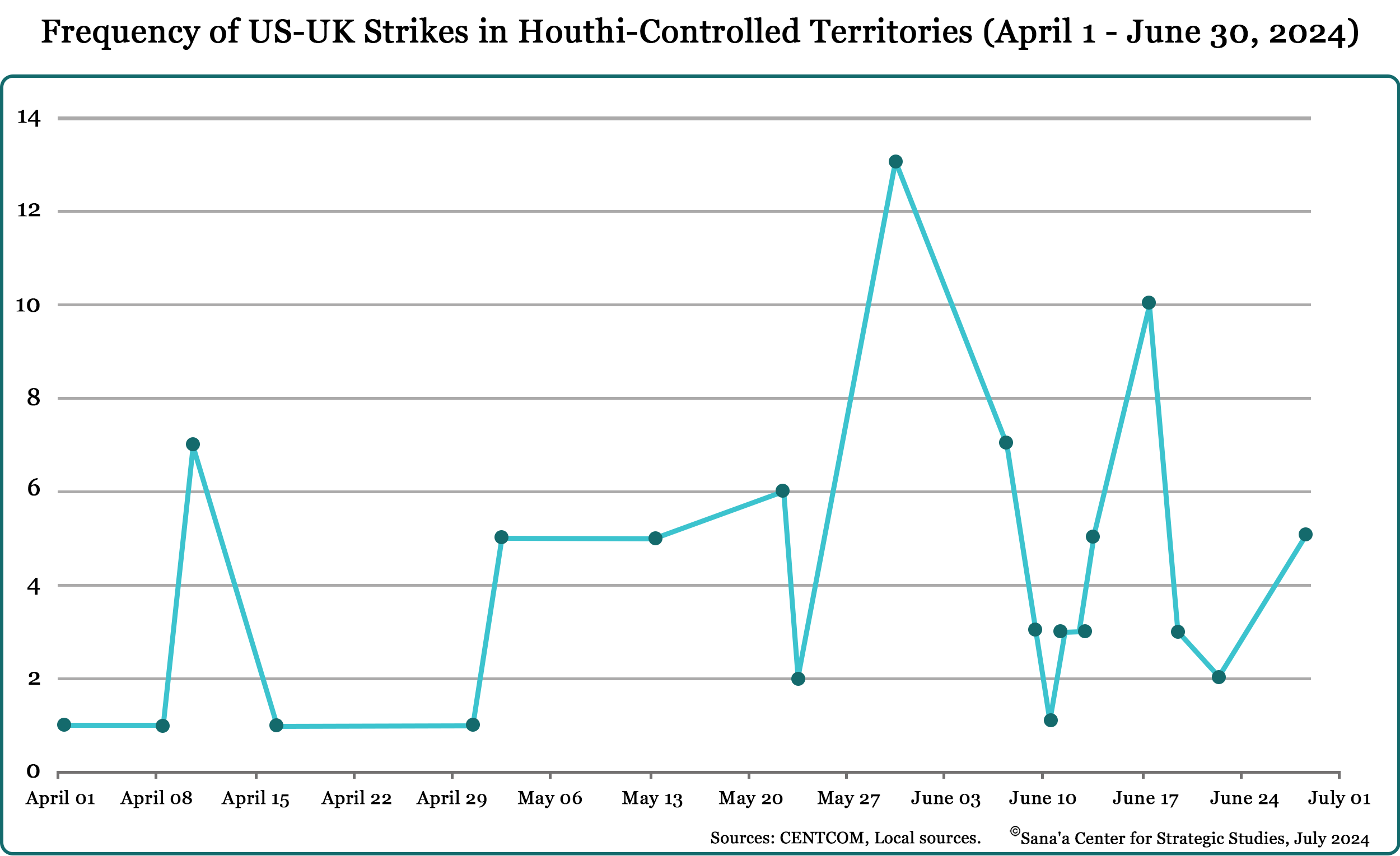
Another intense round of bombing occurred one week later when US forces launched 19 raids between June 7-14 against targets in Sana’a, Hudaydah, and Raymah governorates. Among these, a series of strikes on June 13 targeted a radio tower in Raymah governorate’s Al-Jubayn military complex, reportedly leaving five civilians dead. The day after, US forces destroyed seven Houthi radar systems that assisted Houthi forces in targeting maritime vessels.
To the south, there is evidence that Houthi operations could be ongoing near the Al-Kour mountain range, which lies on the border between Al-Bayda’s Mukayras district and Abyan’s Lawdar district. Residents there have reported regular military activity, with suspected military aircraft heard in the area on April 25 and May 5 and suspected Houthi missile launches occurring on June 8, 13, and 21. Despite the fact that local residents regularly report these activities, neither US nor Houthi forces have confirmed strikes in Al-Bayda in recent months.
Lahj Frontlines Heat Up, Others Remain Active
Intense fighting broke out on several frontlines in Lahj, as Houthi reinforcements arrived to counter pro-government and STC forces stationed in the governorate. The Karesh front – which lies in Lahj’s Al-Qabaytah district along the border with Taiz, and is made up of the Hamala Hawamrah frontline in the far north, Shifan-Al-Sahi, Al-Dhawari Mountain Range, and Al-Dubai frontline in the south – saw an uptick in violence in recent months, as the Houthis attempted to capture strategic heights and cut supply lines. The fighting was intense enough to warrant a mention from UN Special Envoy Hans Grundberg in his April 15 address to the UN Security Council. In the last three months, a total of 41 STC-affiliated and pro-government soldiers were killed and another 215 were injured along the Karesh front. Meanwhile, Houthi forces saw an estimated 155 fighters killed and 326 wounded, according to anti-Houthi soldiers, tribal sources, and local activists.
In the nearby Tur al-Bahah area, which lies at a critical junction overlooking Hayfan district in Taiz and Al-Qabaytah district in Lahj, Nation’s Shield forces took over military posts from the 4th Hazm Brigade on April 27. The handover from the STC-aligned forces was agreed with Saudi-led coalition forces, under whose umbrella the Nation’s Shield operates.
On May 9-10, the first major clashes broke out between the Saudi-trained soldiers and Houthi forces, leaving three Houthi fighters dead and seven wounded, and five Nation’s Shield soldiers wounded. In the following weeks, the front stayed active, with clashes occurring on a weekly basis. On May 16, Nation’s Shield forces captured a group of Houthi soldiers in possession of large sums of money (likely for salaries) and lists of fighters near the fronts in both Al-Qabaytah and Tur al-Bahah districts. Since the outbreak of fighting in May, 12 Nation’s Shield soldiers were killed on the frontline, and 45 others were injured. Meanwhile, 26 Houthi fighters were killed and an additional 57 were wounded, according to anti-Houthi soldiers, tribal sources, and local activists.
Other frontlines in Hudaydah, Taiz, Marib, Al-Bayda, and Al-Dhalea have witnessed regular fighting since the start of April. Among these, Hudaydah has been particularly active, perhaps unsurprisingly given Houthi activity along the coast. Houthi forces have reportedly been digging and fortifying a series of tunnels along frontlines in southern Hudaydah, including in Al-Hajroufah area in the south of Al-Tuhayta district and the Bayt al-Hashash area in Hays district, according to local military sources. In Taiz, the Islah-affiliated Military Axis reported thwarting several Houthi advances on the Kalaba and Asifra fronts to the northeast of Taiz city, which see regular fighting.
To the north, Presidential Leadership Council (PLC) members have reportedly been watching tensions in Marib, where they fear the Houthis could resort to military action if pushed too far in the mushrooming banking war between Sana’a and Aden . While fighting has not escalated beyond the usual clashes between UAE-backed Saba Axis of the Giants Brigade forces and Houthi fighters along the border between Harib and Al-Abdiyah districts, there are numerous points of contact in western and southern Marib that the Houthis could test.
Other Developments In Brief
May 12: A team from the International Committee of the Red Cross (ICRC) in Yemen was allowed to board the Galaxy Leader ship, which Houthi forces hijacked on November 19. The Houthis repeatedly refused to negotiate the release of the crew members, saying their release was directly linked to Israel’s campaign in Gaza.
May 17: The pro-government 35th Armored Brigade claimed to have captured a Houthi spy cell, consisting of 16 individuals, in Al-Mawasit district in Taiz. The arrests were criticized by some activists as unjustified.
May 28: Chinese Foreign Minister Wang Yi called on the Houthis to stop attacking commercial vessels in a meeting with newly appointed government Foreign Affairs Minister Shaya al-Zindani in Beijing. The demand comes only ten days after Houthi forces hit an oil tanker traveling from Russia to China, despite an agreement they would not target either country’s cargo.
June 11: The International Organization for Migration announced that a boat carrying nearly 260 Somali and Ethiopian migrants had capsized in the Gulf of Aden, leaving at least 49 people dead and 140 missing.

 اقرأ المحتوى باللغة العربية
اقرأ المحتوى باللغة العربية
